房室結節回帰性頻拍(atrioventricular nodal reentrant tachycardia:AVNRT)
房室結節回帰性頻拍とは、発作性上室性頻拍の一つです。その名の通り、房室結節のリエントリー(回帰性)による頻拍です。
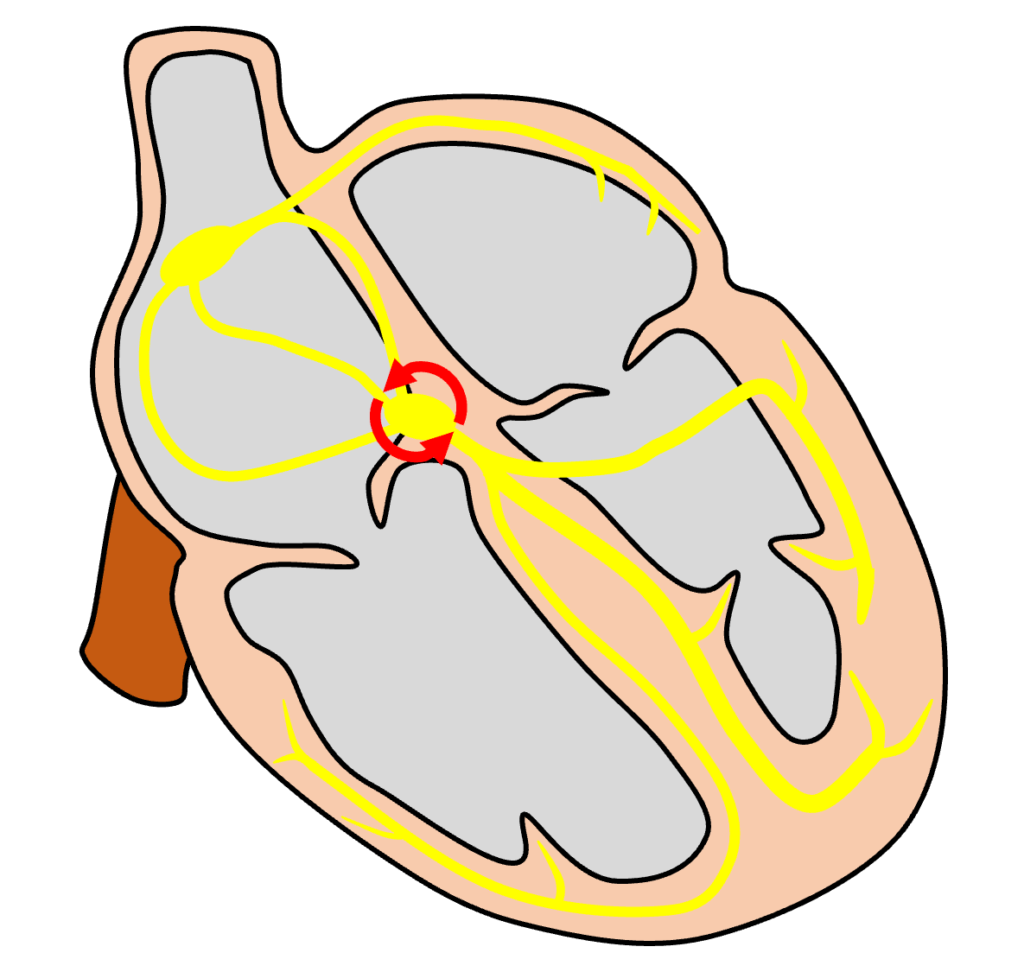
心房からヒス束に至る経路を2本以上有しており、伝導の速い速伝導路(fast pathway)と伝導の遅い遅伝導路(slow pathway)があります。
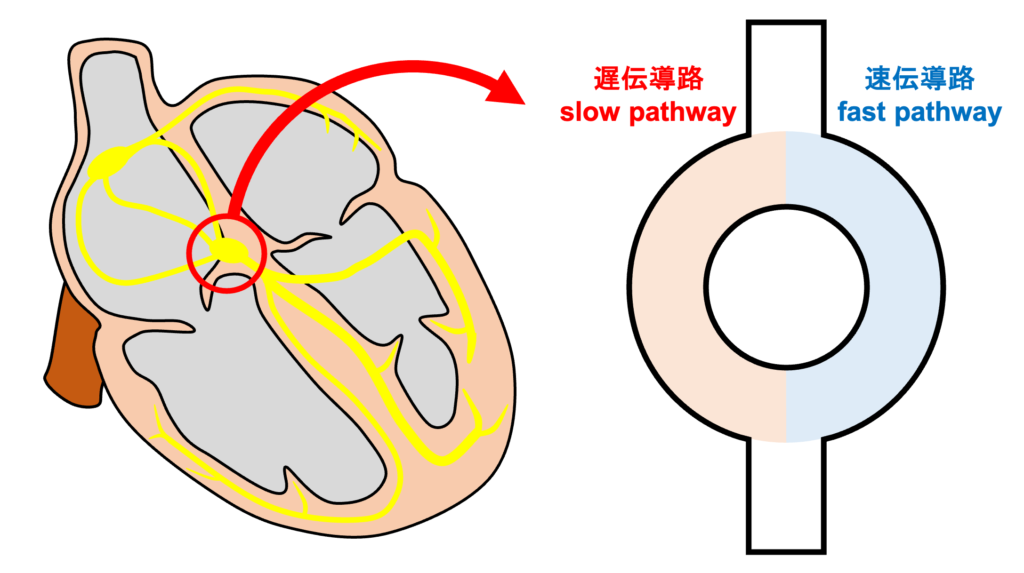
心房からの興奮は速伝導路と遅伝導路に伝わり、伝導の速い速伝導路を通過した興奮が心室へ伝導します。また、速伝導路の興奮が遅伝導路を逆行性に伝導することで心房から遅伝導路に伝わった興奮とぶつかり消滅します。
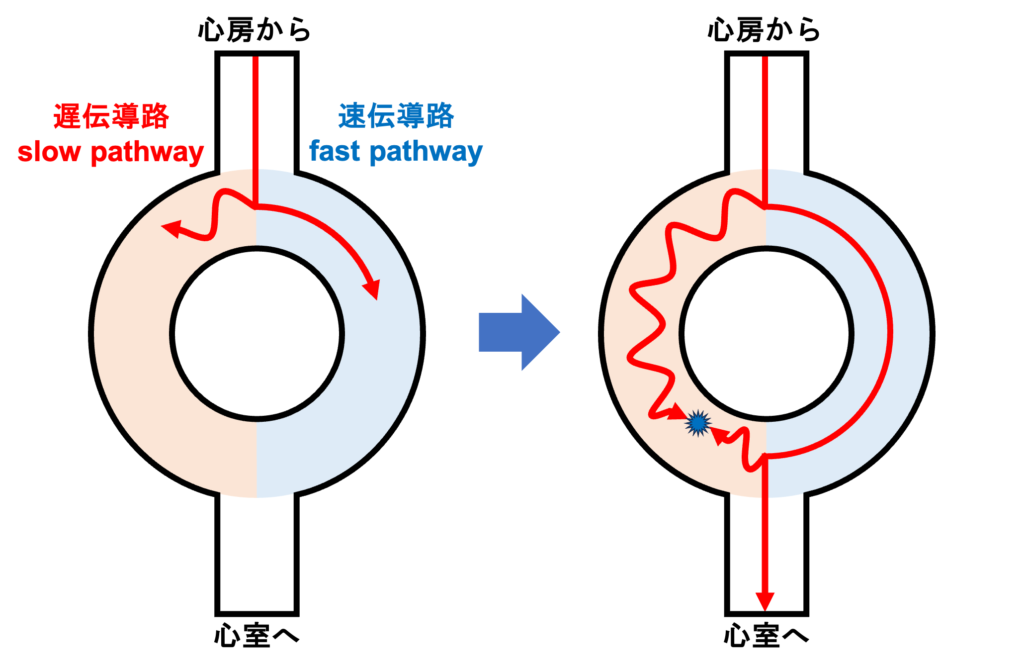
しかし、期外収縮などを契機に興奮が遅伝導路を通り、速伝導路を戻ってきて興奮がぐるぐると旋回することで、頻拍発作が起こります。
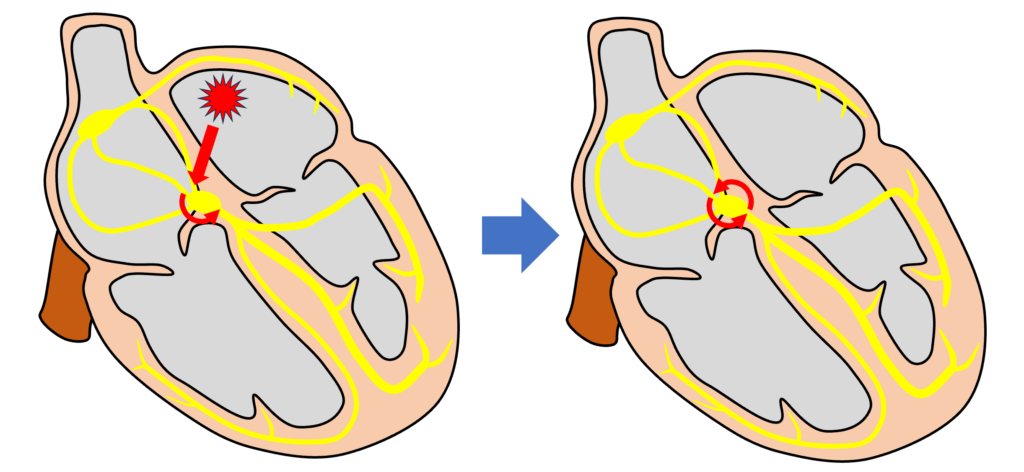
速伝導路(fast pathway)は伝導速度が速く、不応期が長いです。逆に、遅伝導路(slow pathway)は伝導速度が遅く、不応期が短いという特徴があります。
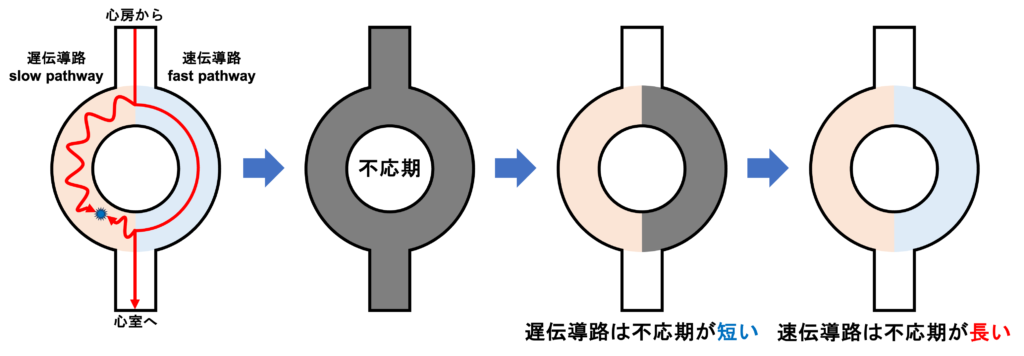
そのため期外収縮が生じると、速伝導路は不応期が長いため興奮が伝わりませんが、遅伝導路は不応期を脱しているため興奮が伝わります。そのあと興奮は遅伝導路を順伝導し、その間に速伝導路は不応期を脱します。

そして遅伝導路を抜けた興奮は速伝導路を逆行性に伝導します。この時に心室と心房に興奮が伝わります。
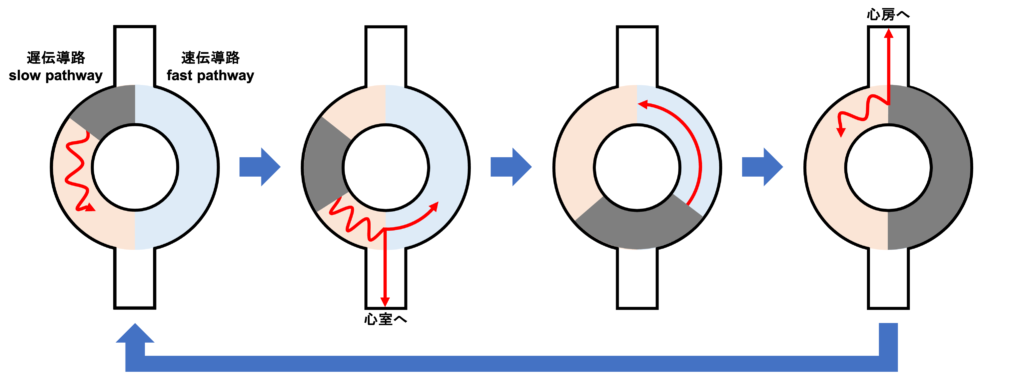
このようにしてリエントリーが完成します。これはslow pathwayを順行性に伝導し、fast pathwayを逆行性に伝導するためslow-fast AVNRTと呼びます。
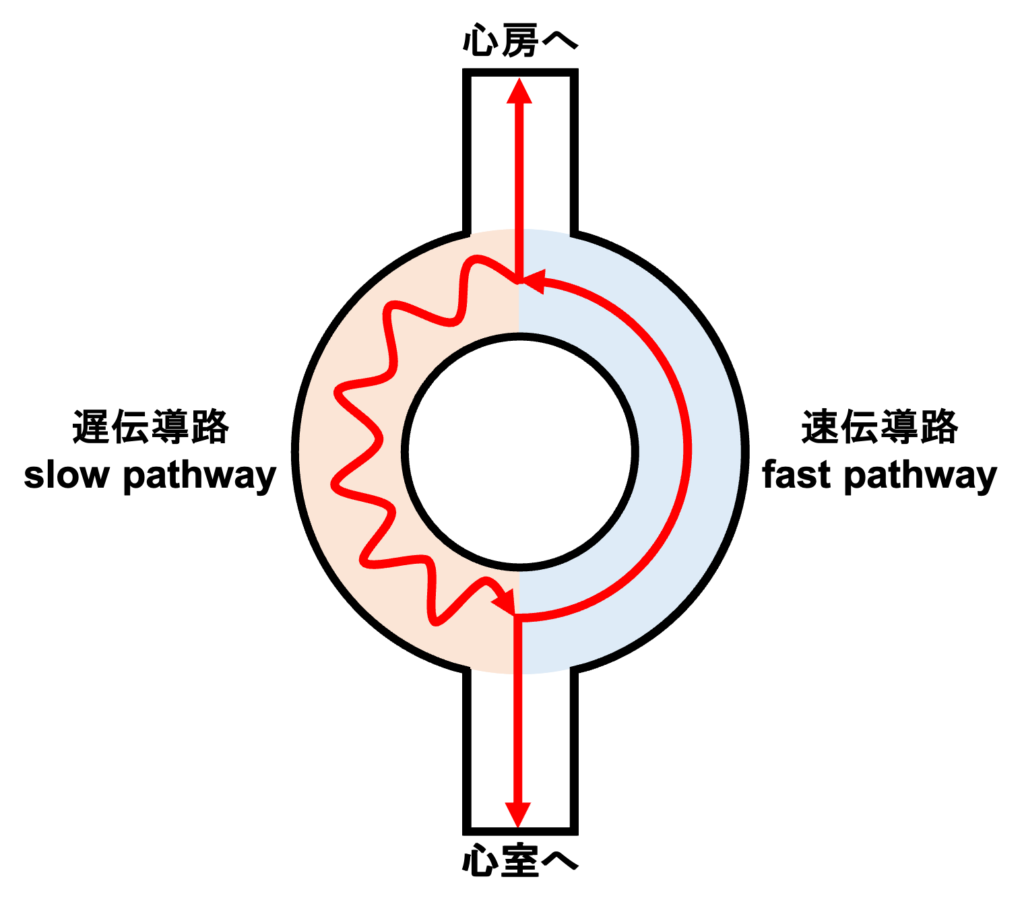
AVNRTは伝導の様式によって通常型(slow-fast AVNRT)と稀有型(slow-slowおよびfast-slow AVNRT)に分けられます。
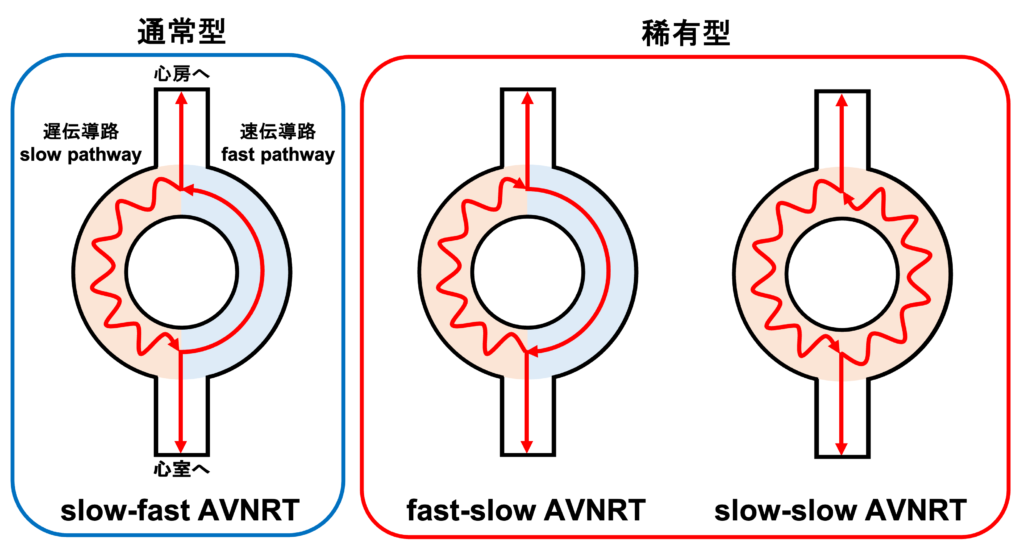
slow-fast AVNRTの心電図所見
通常型(slow-fast AVNRT)のAVNRTの逆行性P波はQRS波に埋もれて見えないことが多いです。これは、遅伝導路を伝導した興奮がヒス束を下りるのと同時に速伝導路を速やかに逆行伝導するためです。しかしながら、伝導時間のずれにより逆行性P波が見えることがあり、それにより以下のような所見が見られることがあります。
偽性r’波(pseudo-r′)
V1誘導で逆行性P波がr’波のように見えることがあり、偽性r’波(pseudo-r′)と呼ばれています1)。
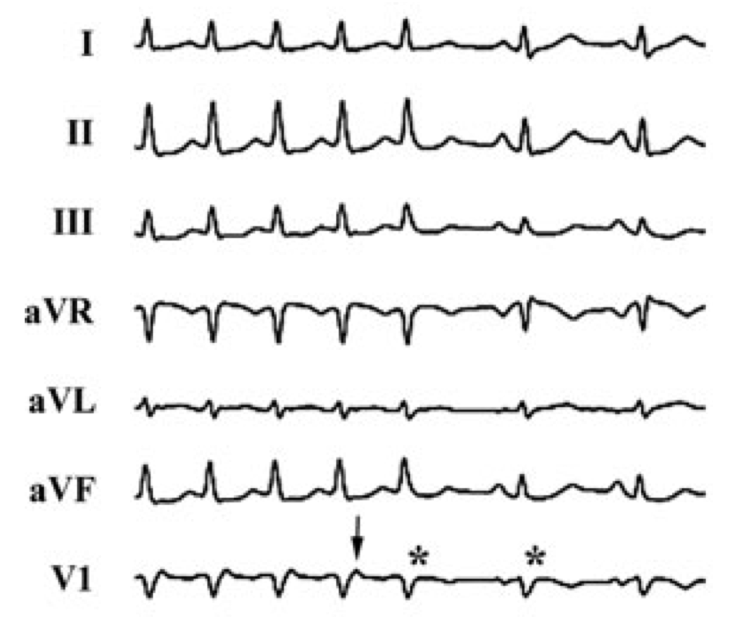
AVNRTの診断では、aVRのpseudo-r′は、V1のpseudo-r′に比べて、感度、特異度が高いという報告があります3)。
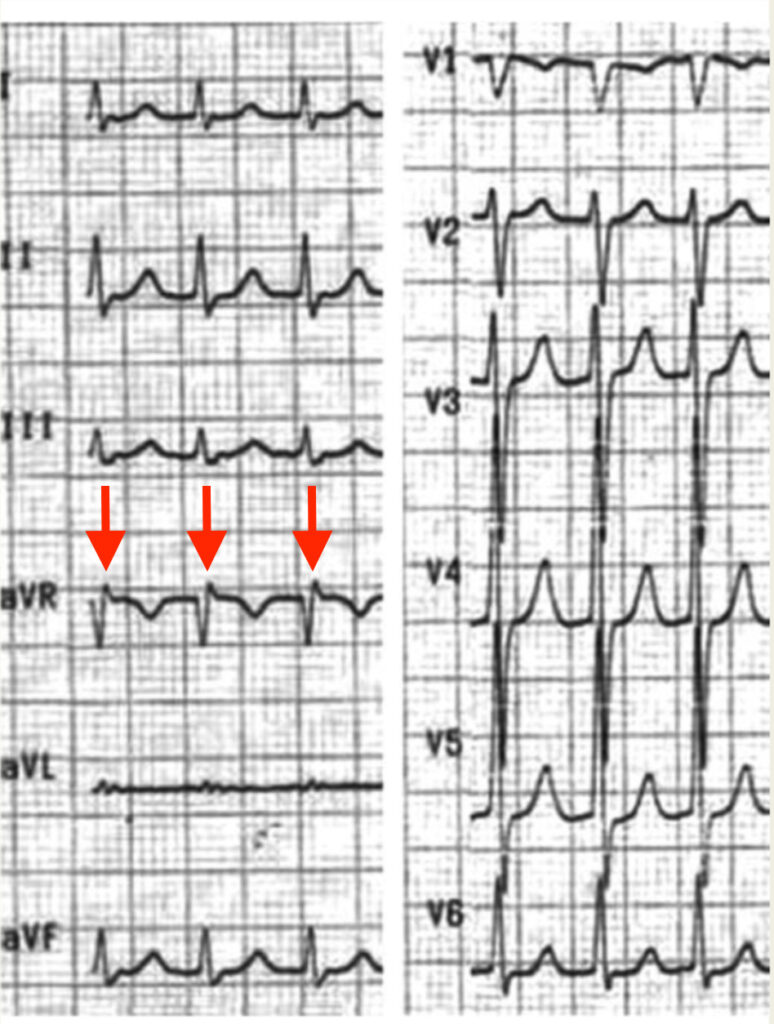
偽性S波(pseudo S wave)
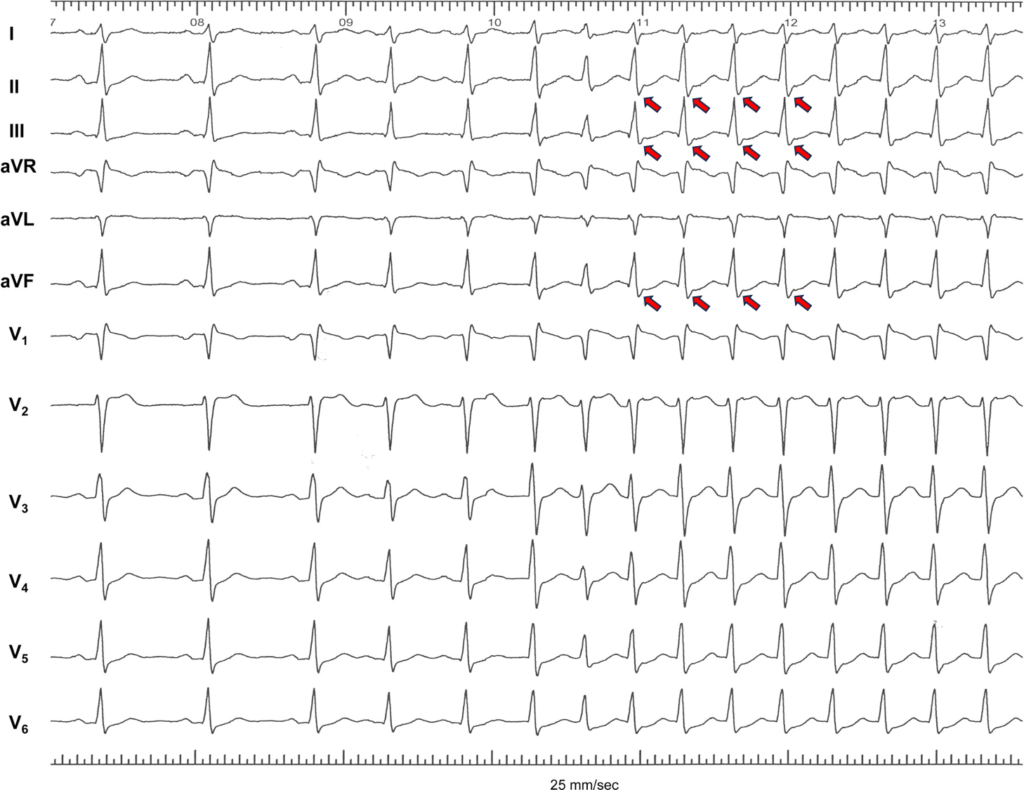
逆行性の興奮が少し遅れた場合に下方誘導で逆行性P波がS波のように見えることがあり、偽性S波(pseudo S wave)と呼ばれています1)。
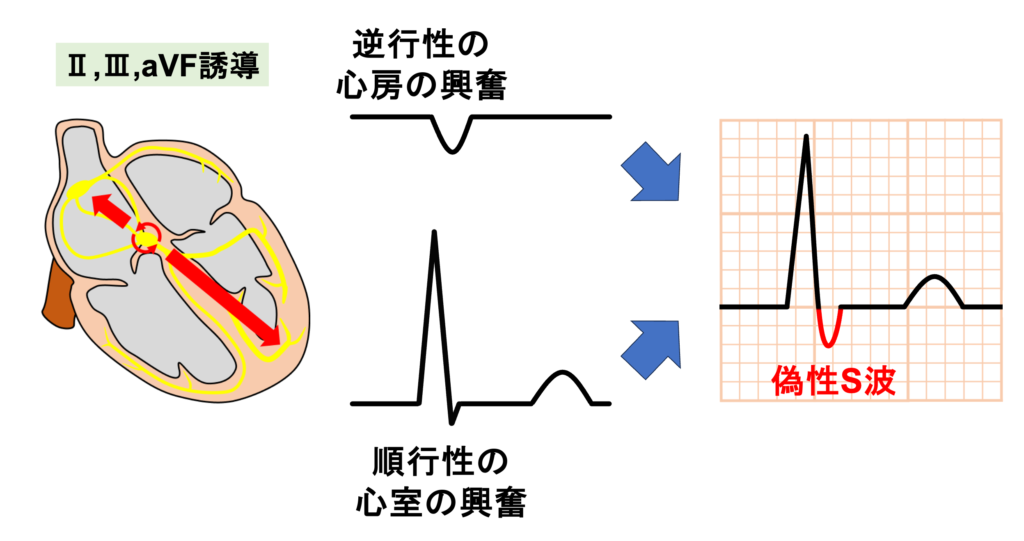
偽性Q波(pseudo Q wave)
逆行性の興奮が少し早かった場合に下方誘導で逆行性P波がQ波のように見えることがあり、偽性Q波(pseudo Q wave)と呼ばれています2)。
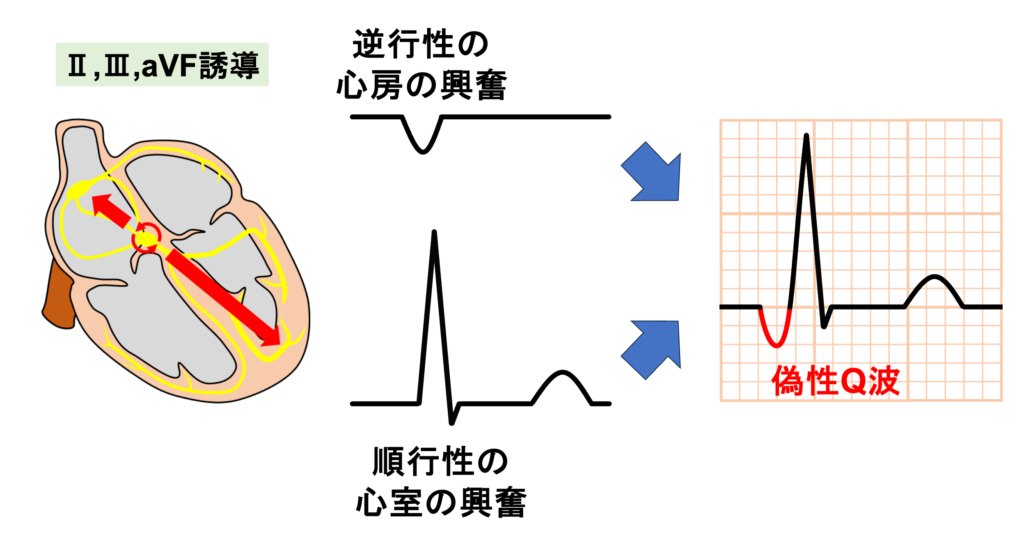
narrow QRS tachycardiaとの鑑別
slow-fast AVNRTはnarrow QRS tachycardiaの一つであり、他の頻拍との鑑別が必要になります。
P波
一般的にはslow-fast AVNRTではP波はRR間隔の前半に存在しており、QRS波の中〜直後にあることからvery short RP頻拍と呼ばれます。
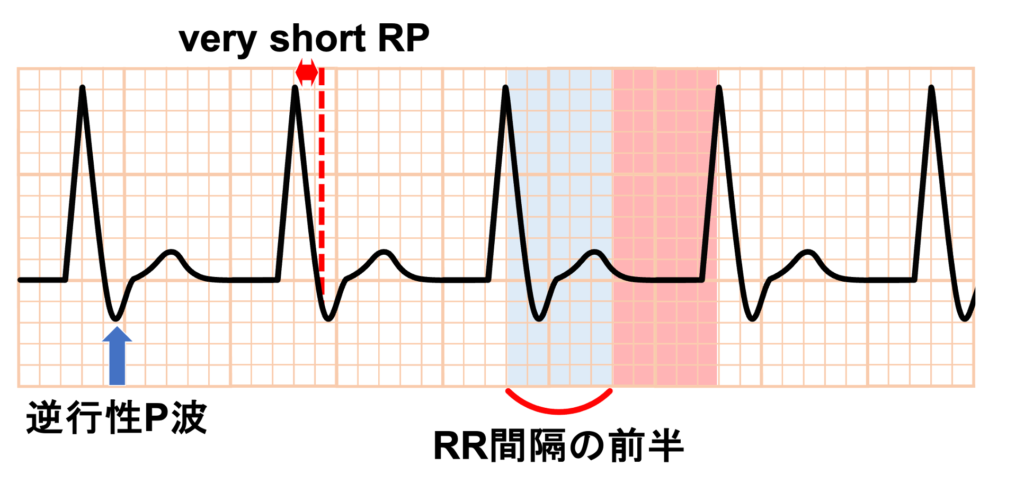
停止様式
ATP
ATPを投与すると房室結節の伝導が一時的にブロックされます。slow-fast AVNRTでは房室結節をリエントリー回路に含んでおり、速伝導路または遅伝導路の伝導がブロックされます。速伝導路がブロックされた場合は最後はQRS波で終わります。
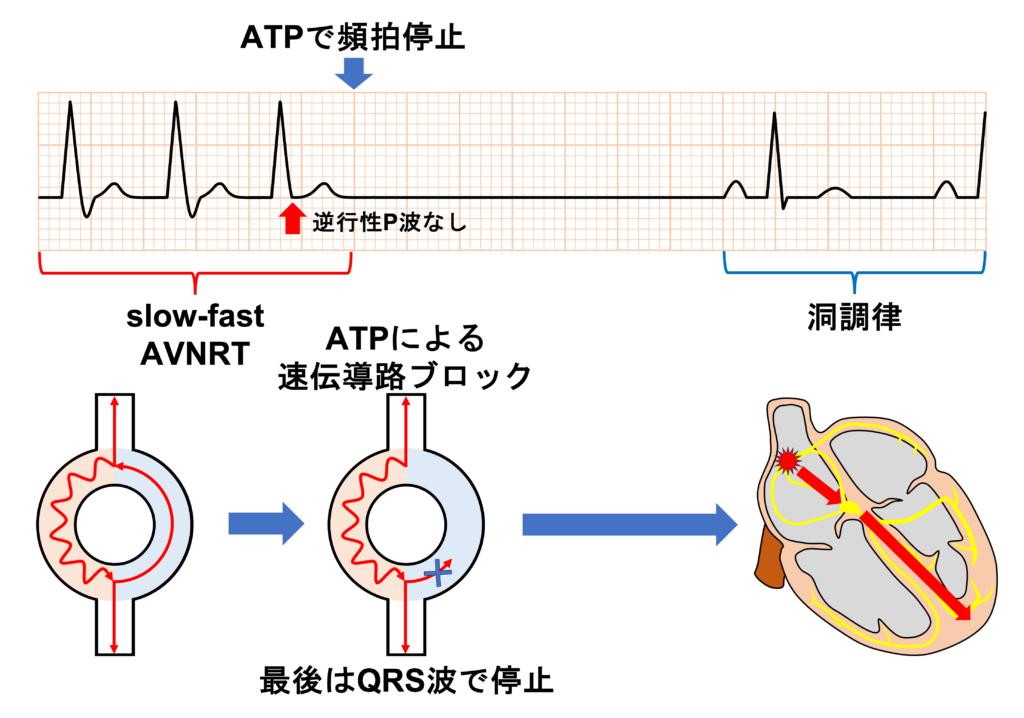
遅伝導路がブロックされた場合は最後は逆行性P波で終わります。
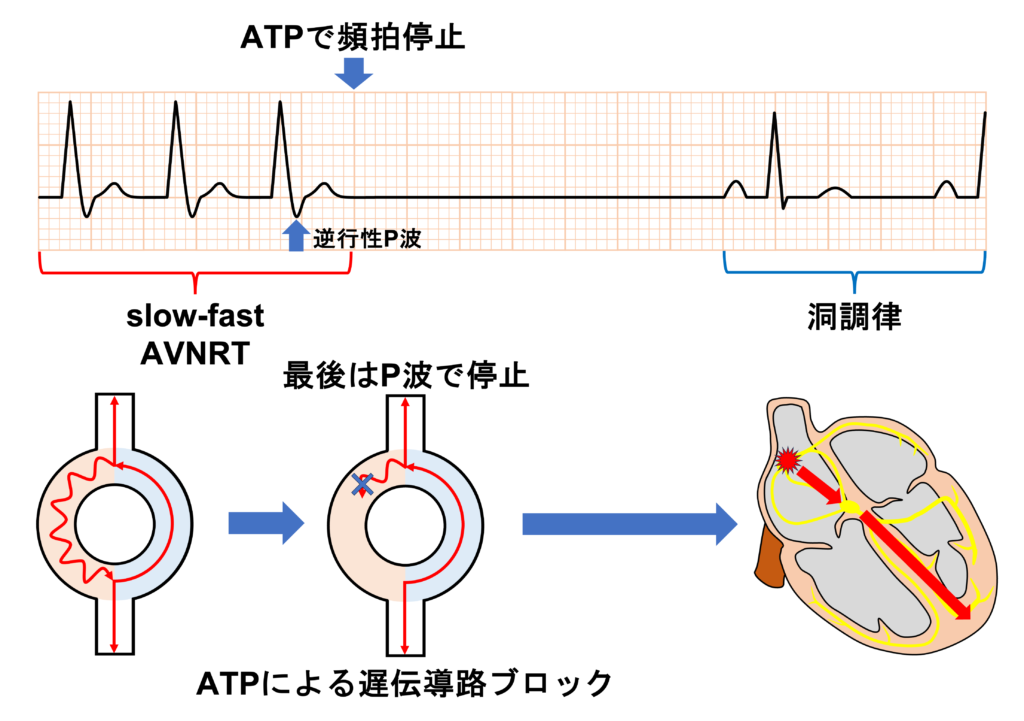
自然停止
slow-fast AVNRTが自然に停止する場合、速伝導路または遅伝導路で興奮が停止するので、速伝導路で興奮が停止した場合は最後はQRS波で終わり、遅伝導路で興奮が停止した場合は最後は逆行性P波で終わります。
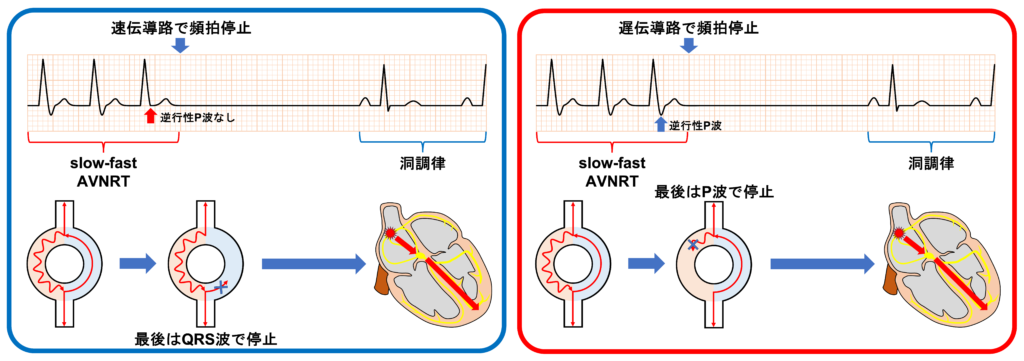
参考文献
1)Differentiation of paroxysmal narrow QRS complex tachycardias using the 12-lead electrocardiogram. J Am Coll Cardiol. 1993 Jan;21(1):85-9.←AVNRTの症例でV1誘導のpseudo-r′と下方誘導でのpseudo S波がそれぞれ58%と14%でみられた。
2)EGC diagnosis of paroxysmal supraventricular tachycardias in patients without preexcitation. Ann Noninvasive Electrocardiol. 2011 Jan;16(1):85-95.←PSVTに関する鑑別のまとめ。AVNRTを疑う所見としてaVL誘導のノッチも報告されている。
3)Value of the aVR lead in differential diagnosis of atrioventricular nodal reentrant tachycardia. Europace. 2012 Nov;14(11):1624-8. ←aVRのpseudo-r′は感度67%、特異度90%
4)Atrioventricular nodal reentrant tachycardia. Circulation. 2010 Aug 24;122(8):831-40.←CirculationのAVNRTのreview
書籍
今さら聞けない心電図 P176-177
エキスパートはここを見る心電図読み方の極意 P80-87
心電図マイスターによる3→1級を目指す鑑別力grade up演習 P153-155


